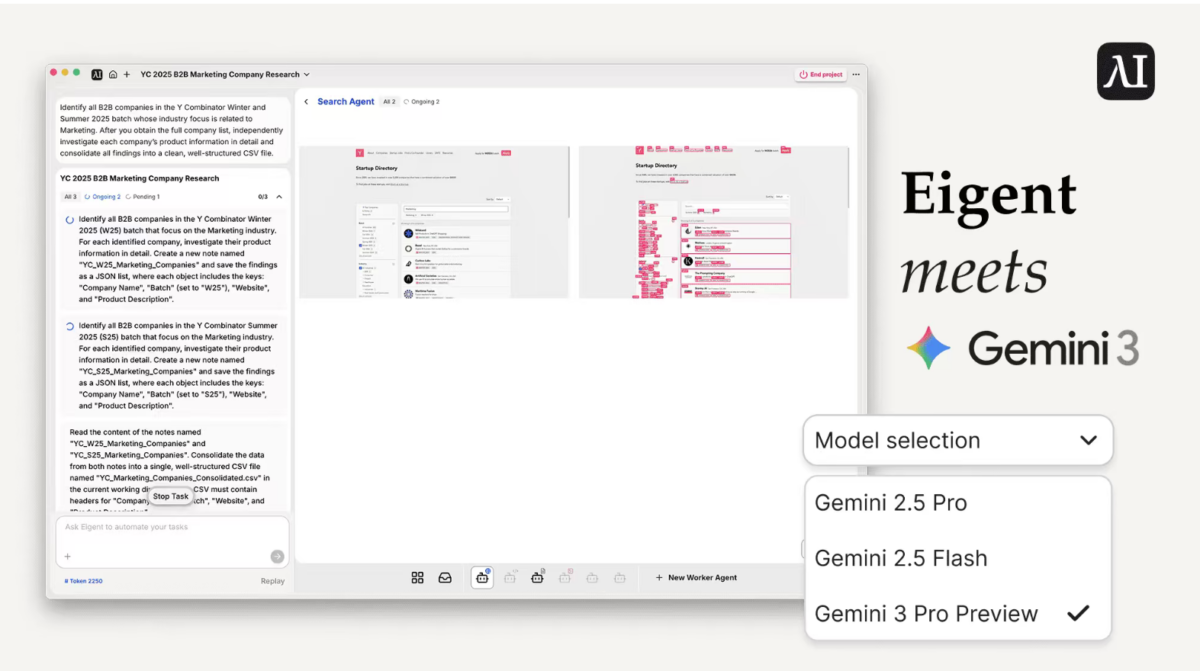Technical debt is when businesses make fast decisions in software development to save time or money, but these shortcuts cause problems later on. It must be “paid back” via further work to resolve flaws or improve the code.
Technological debt can slow down progress, which makes systems more difficult to maintain and raises expenses if not managed properly. This article will explain what technical debt is in product management and its consequences.
What Is Technical Debt in Software Development?
Technical debt occurs when engineers take shortcuts while writing code to create software rapidly. These shortcuts mean using simpler and less effective solutions or missing important processes such as testing or documentation.
This strategy can help a project get started sooner, but it creates “debt” that must be “repaid” later. This refund takes the form of additional work to fix or maintain the code.
Over time, technical debt can increase, making the product and code more difficult to handle and understand. If technical debt is not properly managed, it can develop into larger, more expensive, and time-consuming issues.
Why Is Technical Debt Important?
Now that you know what tech debt is, let’s learn why it is important:
1) Impact on Code Quality
Technical debt can reduce the quality of the codebase. As debt grows, the code becomes more complex and error-prone. This decrease in quality can lead to more flaws and vulnerabilities in the program, which makes it less trustworthy and increases the likelihood of failures or security issues.
2) Increased Development Costs
Ignoring technical debt increases the expense of correcting it over time. Fixing problems later takes more time and resources than if addressed sooner. This can result in budget overruns and project delays as developers spend extra time reworking code and increasing system performance.
3) Slower Future Development
High technical debt can decrease future development efforts. Adding new features or adjustments takes longer as the software becomes more complicated. This can decrease a team’s capacity to respond rapidly to new opportunities or market needs. It can even result in lost business or a competitive advantage.
4) Difficulty Scaling
As technological debt rises, scaling the product to handle more users or features becomes more difficult. If the code is not optimized for performance, it results in inefficiencies that can cause slowdowns or crashes when severe demand occurs. Addressing these difficulties later can be more complicated and expensive, making it difficult to support expansion.
5) Reduced Team Productivity
More technological debt can reduce developer productivity. When the codebase is disorganized or full of workarounds, developers spend more time understanding the code and dealing with other problems. This can result in frustration and a slower development rate, making it difficult to fulfill deadlines or provide high-quality software.
6) Risk of Technical Failure
Failure to address technical debt can result in the adoption of outdated technologies or methods. As technology advances, the gap between the existing state of software and modern standards grows, making it more difficult to integrate with new tools or platforms. This can limit the software’s capacity to remain competitive or satisfy new user needs, potentially resulting in a costly and time-consuming update in the future.
7) Impact on User Experience
Technical debt negatively impacts the user experience. Slow speed and uneven functioning can annoy customers and cause them to lose trust in the software. This can eventually lead to decreased user engagement and a loss of income or market share.
8) Onboarding New Team Members
New team members can struggle to understand a codebase with a large technical debt. A lack of clear structure and best practices can increase the learning curve and slow down the onboarding process. This can cause a delay in new developers’ productivity and contribution to the project.
How Can Technical Debt Be Used?
Technical debt can be used in many ways, such as:
1) Facilitating Resource Management
Technical debt can be used strategically to help a development team manage its limited resources. Deferring some technical advancements or optimizations allows resources like time and talent to be channeled into more urgent or higher-priority initiatives.
This strategy helps teams to focus on immediate deliverables or urgent issues. Teams can focus without being put down by the requirement to perfect every part of the codebase.
2) Driving Continuous Improvement
When acknowledged and tracked, technical debt can be an effective instrument for continual improvement. Teams can conduct reviews of places where debt has accumulated and plan for methodical refactoring. This helps preserve codebase quality and encourages a continuous optimization culture in which engineers are encouraged to revisit and improve earlier work.
3) Balancing Technical and Non-technical Demand
In a fast-paced setting, technical debt helps teams manage the opposing demands of technical severity and business objectives. By getting debt, teams can concentrate on delivering features that match non-technical stakeholder expectations, such as customer-facing features or regulatory needs. This method ensures that business demands are met without risking the system’s long-term health.
4) Supporting Agile Development
Ever wondered what technical debt is in agile? Agile development focuses on rapid iterations and continuous delivery, and technical debt can help keep this pace. By delaying some technical tasks to subsequent sprints, teams can focus on producing working software regularly as per Agile principles.
This strategy helps keep momentum and ensures that the development process remains flexible and adaptable to changing requirements.
5) Enhancing Flexibility in Uncertain Environments
In projects where requirements are expected to change or are not clearly defined from the start, technical debt can give the flexibility needed to adjust. Teams can decide to keep the project on track, even if it means getting temporary debt.
This flexibility helps teams to turn and respond to changes without being bound by early decisions. This results in a final product that better fits the needs of stakeholders as they arise.
6) Aligning With Business Milestones
Technical debt can be carefully matched with key business milestones like product launches and big marketing campaigns. Prioritizing important features or components for these milestones allows teams to guarantee that the most important deliverables are done on time.
While this can end up in some technical debt, it can be anticipated and paid later. This makes sure that business goals are satisfied without risking long-term technical integrity.
7) Facilitating Cross-Team Collaboration
Technical debt can improve communication and integration in large projects with several teams. Keeping certain technical parts variable or incomplete helps teams concentrate on ensuring that their components work seamlessly with those developed by other teams. This technique helps manage dependencies and work across teams to ensure a smoothly running system.
8) Enabling Prototyping and Experimentation
Technical debt can be intentionally incurred to facilitate quick prototyping and experimentation. This method helps teams to quickly verify concepts and get user feedback without the overhead of developing a fully optimized solution.
Once the concept has been verified, the team can focus on refining the architecture and code. This fixes any debt incurred during the prototype process and ensures the final product meets technical and business objectives.
8 Examples of Technical Debt
Need some examples of technical debt? No problem! Here are 8 great examples of technical debt:
1) Hardcoded Values
In a web application, database connection strings or API keys are hard-coded into the source code rather than being saved in a secure configuration file or environment variables.
This method can make it easier to update these settings by changing the code and redeploying the application. Furthermore, hard-coded values can cause security issues since they can unintentionally reveal important information if the code is shared or viewed incorrectly.
2) Poorly Designed Code Architecture
Poorly designed code architecture is another example of technical debt. A software project uses a solid architecture with tightly connected components rather than a more modular approach, such as microservices.
This design decision can create important scalability issues for the program, as changes to one area of the system may require revisions to others. It also complicates debugging and feature development because developers must use a complicated and interrelated codebase.
3) Lack of Automated Tests
A project has few or no automated unit tests, depending primarily on manual testing techniques to check functionality. The lack of automated tests raises the likelihood of defects making it into production, as developers have less certainty that their modifications will not cause declines.
Furthermore, it makes changing code or adding new features riskier and time-consuming because each change necessitates considerable manual testing
4) Inconsistent Coding Standards
The lack of guidelines or code reviews leads to different coding practices and styles across the codebase. This disagreement can reduce readability and understanding of the code, which makes it more difficult for engineers to collaborate and maintain the system. Over time, it can raise the cost of maintaining the codebase because more effort is required to standardize and modify the inconsistent code.
5) Discontinued Libraries and Frameworks
An application can use outdated libraries or frameworks that their creators no longer support or maintain. Using outdated components can introduce security issues since they no longer receive updates or patches. Furthermore, compatibility problems can happen when combined with newer technologies or platforms, resulting in increased effort for upgrades.
6) Manual Deployment Processes
Manual deployment processes are complex steps rather than automated tools. This manual approach raises the possibility of human error, as mistakes during deployment can lead to inconsistencies or failures. It also slows down the release process, which makes it difficult to roll out upgrades rapidly and consistently across several contexts.
7) Missing Documentation
Missing documentation means insufficient documentation in the code, such as comments and developer guides. Without sufficient documentation, new engineers or team members have difficulty understanding and working with the codebase. Missing documentation also results in inefficient onboarding and a higher chance of miscommunication.
This lack of documentation can also lead to increased maintenance expenses because future developers must spend more time understanding the code.
8) Spaghetti Code
The codebase’s approach is tangled and unstructured, known as “spaghetti code,” with logic linked weirdly. This chaotic structure makes it difficult to follow or change certain code sections without affecting others. And what does this do? It results in more complex debugging and general system knowledge, which increases development time and expenses.
Conclusion
What is technical debt? It is the expense of taking shortcuts in software development to give features faster or fulfill deadlines. Technical debt can eventually lead to problems such as increased maintenance and higher expenses.
To manage technical debt, you must balance present needs and long-term quality. However, teams can get good software and avoid future problems by regularly addressing and repairing these shortcuts.
FAQs
Q. What Is Technical Debt in Scrum?
Technical debt is the concessions made in software development when quick and easy solutions are preferred over more solid and long-lasting ones.
Q. Is Technical Debt Good or Bad?
Technical debt is the concessions made in software development when quick and easy solutions are preferred over more solid and long-lasting ones.
Q. How Can You Avoid Technical Debt?
Here is how you can avoid technical debt:
Regular code reviews can help detect and fix any technical debt early in development.
Automated testing and refactoring.
Document the debt.
Align with corporate objectives.
Technology advances…
Modularity and design patterns.
Collective code ownership.








